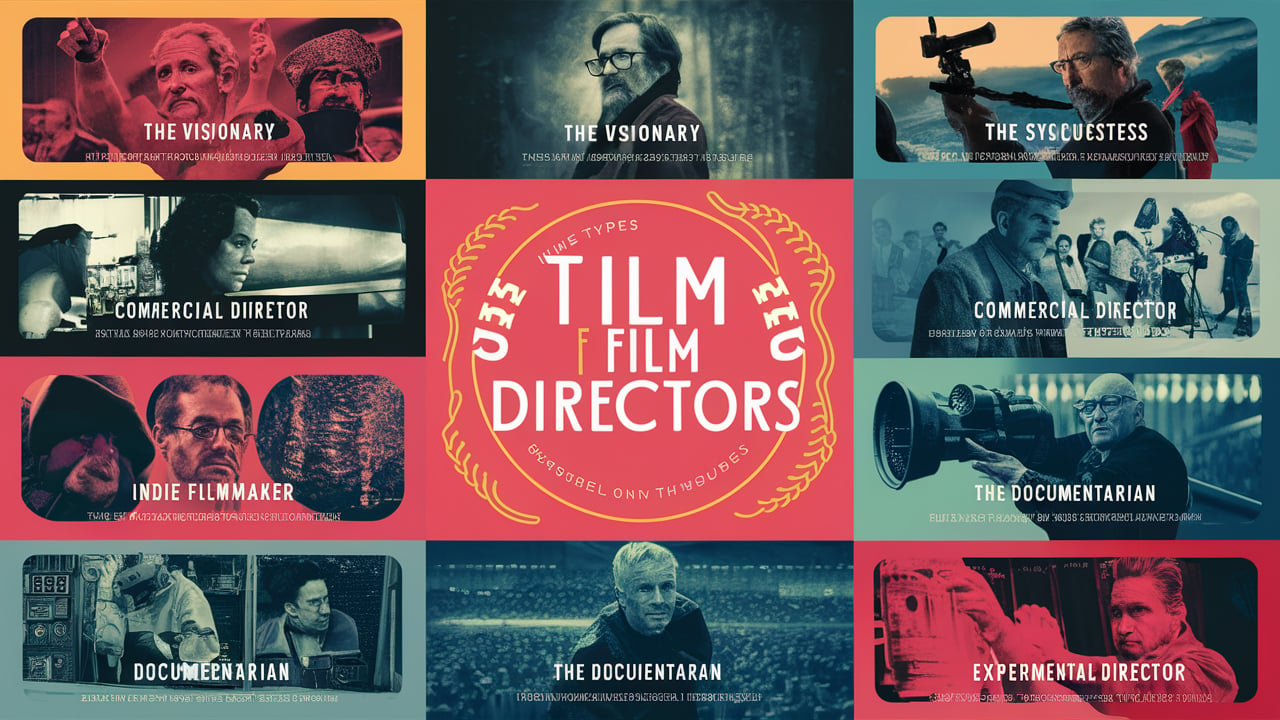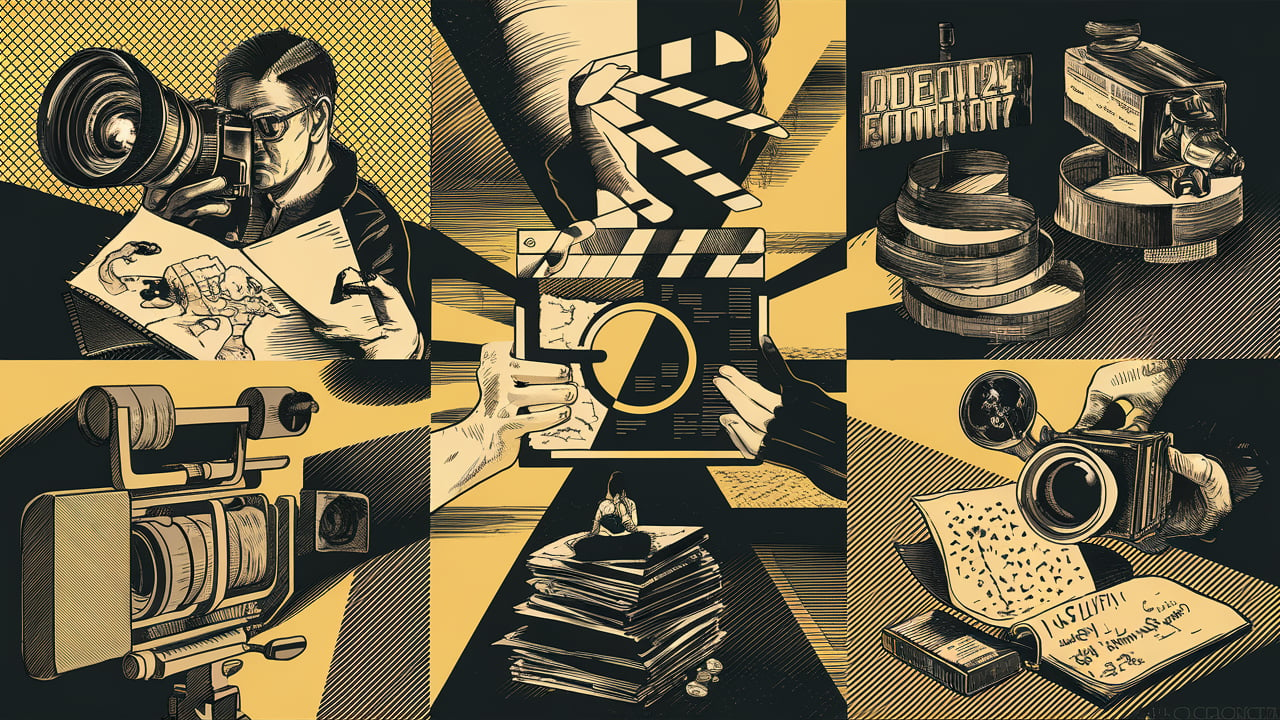The role of a film director is multifaceted and complex, with various approaches and styles shaping the landscape of cinema. This article delves into the different types of directors, their unique approaches, and how they influence the filmmaking process.
Types of Film Directors.
The Auteur.
Definition and Characteristics.
The auteur theory, originating from French film criticism, posits that the director is the primary creative force in a film. Auteur directors are known for:
- A distinctive visual or narrative style.
- Recurring themes across their body of work.
- Strong creative control over various aspects of production.
- Often writing or co-writing their films.
Examples and Impact.
Directors like Alfred Hitchcock, Wes Anderson, and Quentin Tarantino are considered auteurs. Their films are instantly recognizable due to their unique stylistic elements and thematic concerns.
Pros and Cons.
Pros:
- Cohesive artistic vision.
- Distinctive brand in the film industry.
- Often attracts loyal fan bases.
Cons:
- Can be seen as self-indulgent.
- May struggle with collaboration.
- Risk of becoming repetitive.
The Collaborative Director.
Definition and Characteristics.
Collaborative directors excel at working with and bringing out the best in their cast and crew. They are known for:
- Fostering a team-oriented environment.
- Being open to ideas from all departments.
- Adapting their style to serve the project rather than imposing a personal vision.
- Often working with the same team across multiple projects.
Examples and Impact.
Directors like Steven Spielberg and Ron Howard are known for their collaborative approach. Their films often benefit from the collective creativity of their teams.
Pros and Cons.
Pros:
- Creates a positive working environment.
- Leverages the strengths of the entire team.
- Adaptable to different genres and styles.
Cons:
- May lack a distinctive personal style.
- Can sometimes lead to a lack of clear direction.
- Might struggle with asserting authority when necessary.
The Technical Director.
Definition and Characteristics.
Technical directors are known for their mastery of the technical aspects of filmmaking. They are characterized by:
- In-depth knowledge of camera work, special effects, and post-production.
- Often pioneering new filmmaking technologies.
- Emphasis on visual spectacle and technical innovation.
- Meticulous planning and storyboarding.

Examples and Impact.
Directors like James Cameron, Christopher Nolan, and George Lucas are renowned for their technical expertise and innovation in filmmaking.
Pros and Cons.
Pros:
- Push the boundaries of what’s possible in cinema.
- Often create visually stunning films.
- Advance the technical aspects of filmmaking.
Cons:
- May prioritize technical aspects over storytelling or character development.
- Can be expensive and time-consuming.
- Risk of the technology overshadowing the narrative.
The Actor’s Director.
Definition and Characteristics.
Actor’s directors are known for their ability to elicit powerful performances from their cast. They are characterized by:
- Strong background in theater or acting.
- Focus on character development and emotional depth.
- Often allowing for improvisation and actor input.
- Creating a safe and nurturing environment for performers.
Examples and Impact.
Directors like Elia Kazan, Mike Leigh, and Greta Gerwig are known for their ability to draw out nuanced and memorable performances from their actors.
Pros and Cons.
Pros:
- Often results in critically acclaimed performances.
- Creates emotionally resonant films.
- Attracts top acting talent.
Cons:
- May neglect visual or technical aspects of filmmaking.
- Can lead to longer production times due to rehearsals and improvisation.
- Might struggle with action or effects-heavy sequences.
The Indie Director.
Definition and Characteristics.
Indie directors often work outside the mainstream studio system, known for:
- Low-budget, creative problem-solving.
- Often wearing multiple hats (writing, producing, editing)
- Focusing on personal, character-driven stories.
- Embracing unconventional narratives or styles.
Examples and Impact.
Directors like Jim Jarmusch, Greta Gerwig, and Chloé Zhao started in indie film before some moved to larger productions.
Pros and Cons.
Pros:
- Creative freedom and control.
- Often tackles unique or underrepresented stories.
- Can lead to fresh, innovative filmmaking.
Cons:
- Limited resources and distribution.
- May struggle to reach wider audiences.
- Often requires personal financial risk.
The Commercial Director.
Definition and Characteristics.
Commercial directors specialize in creating films with broad market appeal, characterized by:
- Focus on entertainment value and accessibility.
- Skill in managing large budgets and studio expectations.
- Ability to work across various genres.
- Often prioritizing spectacle and star power.
Examples and Impact.
Directors like Michael Bay, J.J. Abrams, and Jon Favreau are known for their commercially successful, crowd-pleasing films.
Pros and Cons.
Pros:
- Often results in box office success.
- Reaches wide audiences.
- Skillful at managing large-scale productions.
Cons:
- May prioritize commercial appeal over artistic vision.
- Can be criticized for lack of depth or originality.
- Often constrained by studio demands and expectations.
The Documentary Director.
Definition and Characteristics.
Documentary directors focus on non-fiction storytelling, known for:
- Ability to find and shape compelling real-life narratives.
- Skills in investigative journalism and research.
- Adaptability to unexpected events during filming.
- Often advocating for social or political causes.
Examples and Impact.
Directors like Werner Herzog, Errol Morris, and Ava DuVernay have made significant contributions to documentary filmmaking.
Pros and Cons.
Pros:
- Can shed light on important issues.
- Often has a tangible impact on society.
- Allows for creative approaches to non-fiction storytelling.
Cons:
- Can face ethical challenges in representation.
- Often works with limited budgets.
- May struggle with objectivity vs. advocacy.

The Genre Specialist.
Definition and Characteristics.
Some directors specialize in particular genres, known for:
- Deep understanding of genre conventions and audience expectations.
- Ability to innovate within established frameworks.
- Often building a loyal fan base within the genre.
- Skill in executing specific types of scenes (e.g., horror, action)
Examples and Impact.
Directors like John Carpenter (horror), Kathryn Bigelow (action), and Nancy Meyers (romantic comedy) have made significant contributions to their respective genres.
Pros and Cons.
Pros:
- Mastery of genre-specific techniques.
- Often leads to consistent commercial success within the genre.
- Builds a strong reputation among genre fans.
Cons:
- May be typecast, limiting opportunities in other genres.
- Risk of becoming formulaic.
- Can struggle when attempting to branch out.
The Evolving Role of the Director.
While these categories provide a framework for understanding different directorial approaches, it’s important to note that many directors don’t fit neatly into a single category. The best directors often combine elements from various styles, adapting their approach to best serve each project.
Moreover, the role of the director continues to evolve with changes in technology, distribution models, and audience expectations. From virtual production techniques to streaming platforms, directors today face new challenges and opportunities that are reshaping the filmmaking landscape.
Ultimately, regardless of style or approach, the goal of any director remains the same: to bring a story to life on screen in a way that engages, entertains, and potentially transforms the audience.

I am a highly experienced film and media person who has a great deal to offer to like-minded individuals. Currently working on several exciting projects, I am a film and media practitioner for over a decade. I have achieved a great deal of success in my professional career.





